Bennington Potters blue glazed ceramic coffee mug: LEAD FREE! Really great gift choice! $31.00 (including shipping).
Note: This is NOT a sponsored post and these photos do not do this mug justice.
Here is the website for this company: https://www.benningtonpotters.com
Does this coffee mug test positive for Lead? NOPE!
When tested with an XRF instrument, this blue glazed Bennington Potters mug (made in Bennington, Vermont and purchased online directly from the manufacturer in 2019) was ACTUALLY LEAD-FREE! AMAZING!! Each test was done for a minimum of 60 seconds, using a freshly-calibrated XRF instrument, testing in Consumer Goods mode. Test are repeated multiple times to confirm the levels. Test results are accurate, science-based, and replicable.
I am so excited to have found an honest-to-goodness Lead-free mug – that is AMERICAN MADE, too! I am a little sad that it is so expensive ($22 + $9 shipping), but given how consistently newly-manufactured mugs still keep testing positive for Lead and other toxicants [often even at high levels!] I really do think it is worth the price – and I also think it is a GREAT GIFT.
Is everything from this company Lead-free?
I have no idea if everything from this company will test similarly to this mug. This is the only example from Bennington Potters that I have tested so far. However, as an educated guess, I would speculate that given how “clean” this one particular mug (pictured here) tested, it is very likely that other products from this company are also Lead-free (as advertised).
Perhaps the most exciting thing is that both the the glaze on this one example is Lead-free, and the SUBSTRATE (the base white clay) is Lead-free as well. With most of the hand-made pieces I have tested (from small potteries that claim their products are 100% Lead-free) the GLAZE is often Lead-free, but the SUBSTRATE is often not Lead-free. The full XRF test results for this blue glazed mug are below.
This is a very large mug (it easily holds about 20 ounces!)- so if that is what you have been looking for (a big mug for daily use for coffee, tea or soup), I think it is an excellent choice!
Do you want to help me collect some more data points for this company?
I would love to test some more products from this company to determine if they are Lead-free across the board. I really want to have an American pottery company that I can confidently recommend to families who are looking for safer choices that are also heirloom quality. I will share this post with Bennington Potters and see if they might send me a few different examples to test and add to the blog.
In the meantime If someone wants to send me a gift of some other examples (other colors and designs of mugs from this company) to test and report on on the blog, I would love that 😉 – As my regular readers know, I like to have several data points before venturing a recommendation that any item, brand or product line seems a good bet to be “likely consistently Lead-free.”
Since the cost of purchasing one of these mugs is comparable to what I ask for as a contribution for testing and reporting an item on the blog – I hereby offer that I will test any additional Bennington Potters mugs that are sent to me and post them to the blog without charge – and just hold on to them afterwards for my family – or to give them away as prizes or gifts to others (assuming they will very likely be Lead-free)! 😉
For some additional reading:
- Another Lead-free mug I have tested that I have been using in my home.
- Guidelines (in general) for purchasing Lead-free mugs.
- A short list of some Lead-free mug choices.
- The “Mug” category on my blog – with hundreds of mugs I have tested that you can scroll through (most mugs have unsafe levels of Lead!)
The base white ceramic (testing the rim on the bottom):
- Barium (Ba): 2,307 +/- 106 ppm
- Zinc (Zn): 56 +/- 22 ppm
- Copper (Cu): 635 +/- 71 ppm
- Iron (Fe): 6,514 +/- 405 ppm
- Vanadium (V): 1,488 +/- 94 ppm
- Titanium (Ti): 5,618 +/- 272 ppm
- Zirconium (Zr): 2,585 +/- 79 ppm
The base white ceramic (testing the logo area in the center of the bottom of the cup):
- Barium (Ba): 1,931+/- 84 ppm
- Zinc (Zn): 38 +/- 18 ppm
- Copper (Cu): 357 +/- 50 ppm
- Iron (Fe): 8,221 +/- 413 ppm
- Bismuth (Bi): 22 +/- 11 ppm
- Vanadium (V): 1,639 +/- 99 ppm
- Titanium (Ti): 7,457 +/- 320 ppm
- Zirconium (Zr): 1,621 +/- 47 ppm
- Platinium (Pt): 101 +/- 41 ppm
The blue glaze – tested on the exterior/side of the cup:
- Barium (Ba): 20,400+/- 1,400 ppm
- Copper (Cu): 10,200 +/- 600 ppm
- Vanadium (V): 11,900 +/- 600 ppm
- Titanium (Ti): 26,700 +/- 1,500 ppm
- Zirconium (Zr): 25,400 +/- 1,200 ppm
- Cobalt (Co): 1,681 +/- 250 ppm
As always, thank you for reading and for sharing my posts. The testing I do (and the results I report here on my blog) is fully directed by my readers… I test what you send me for testing. If you are interested in sending me a single item for testing, click here.
Please let me know if you have any questions.
Tamara Rubin
#LeadSafeMama
Never Miss an Important Article Again!
Join our Email List


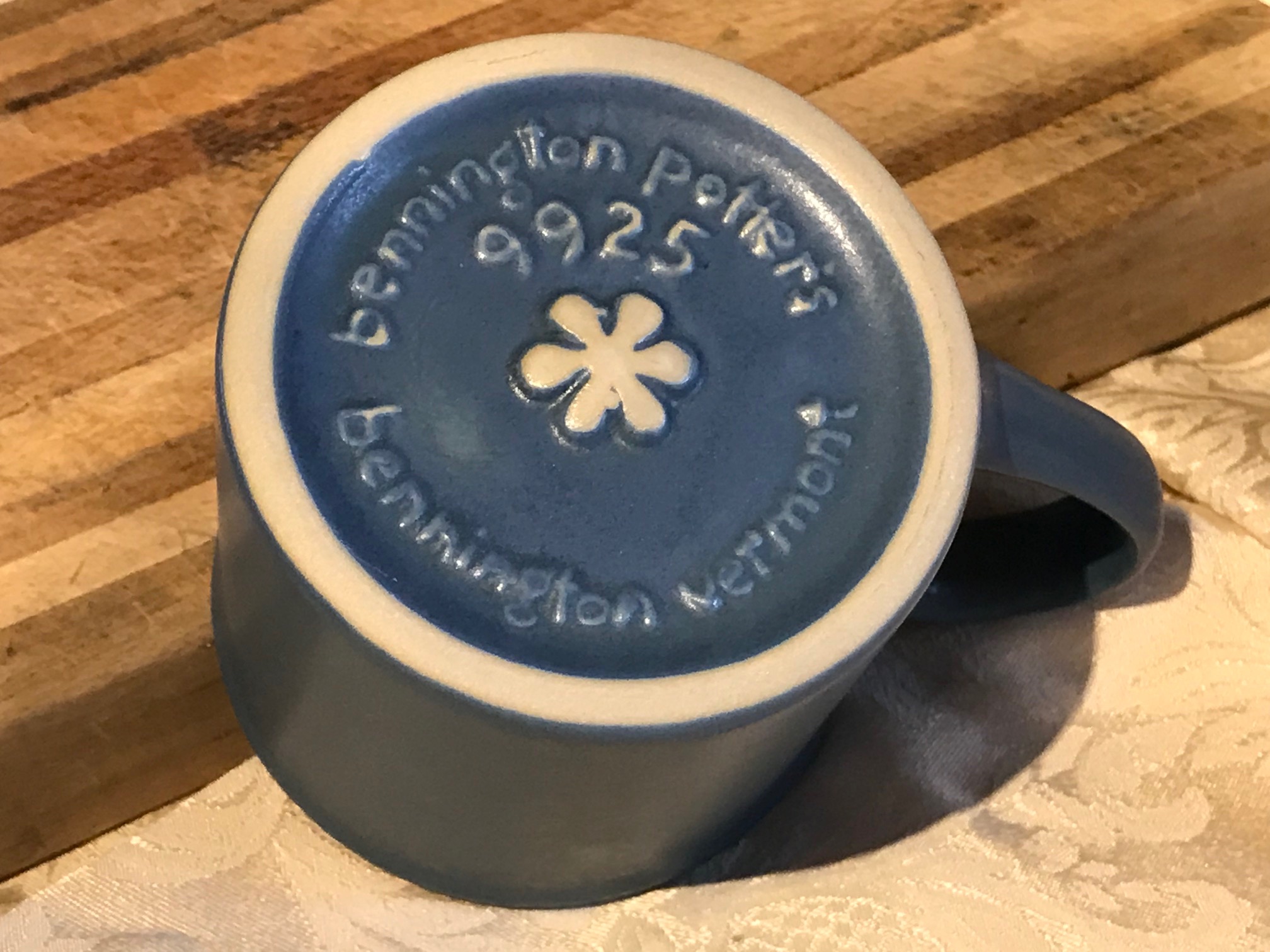
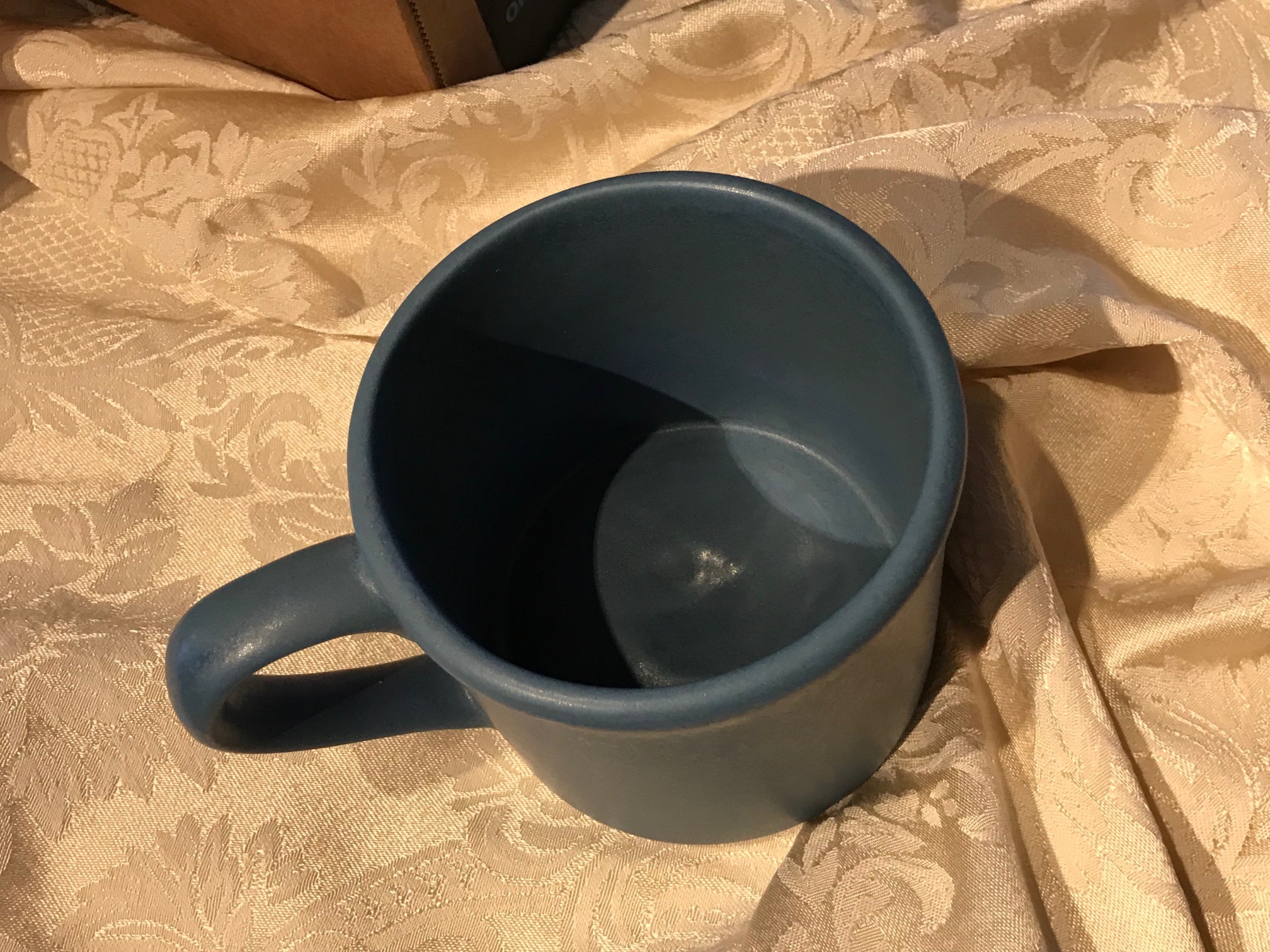
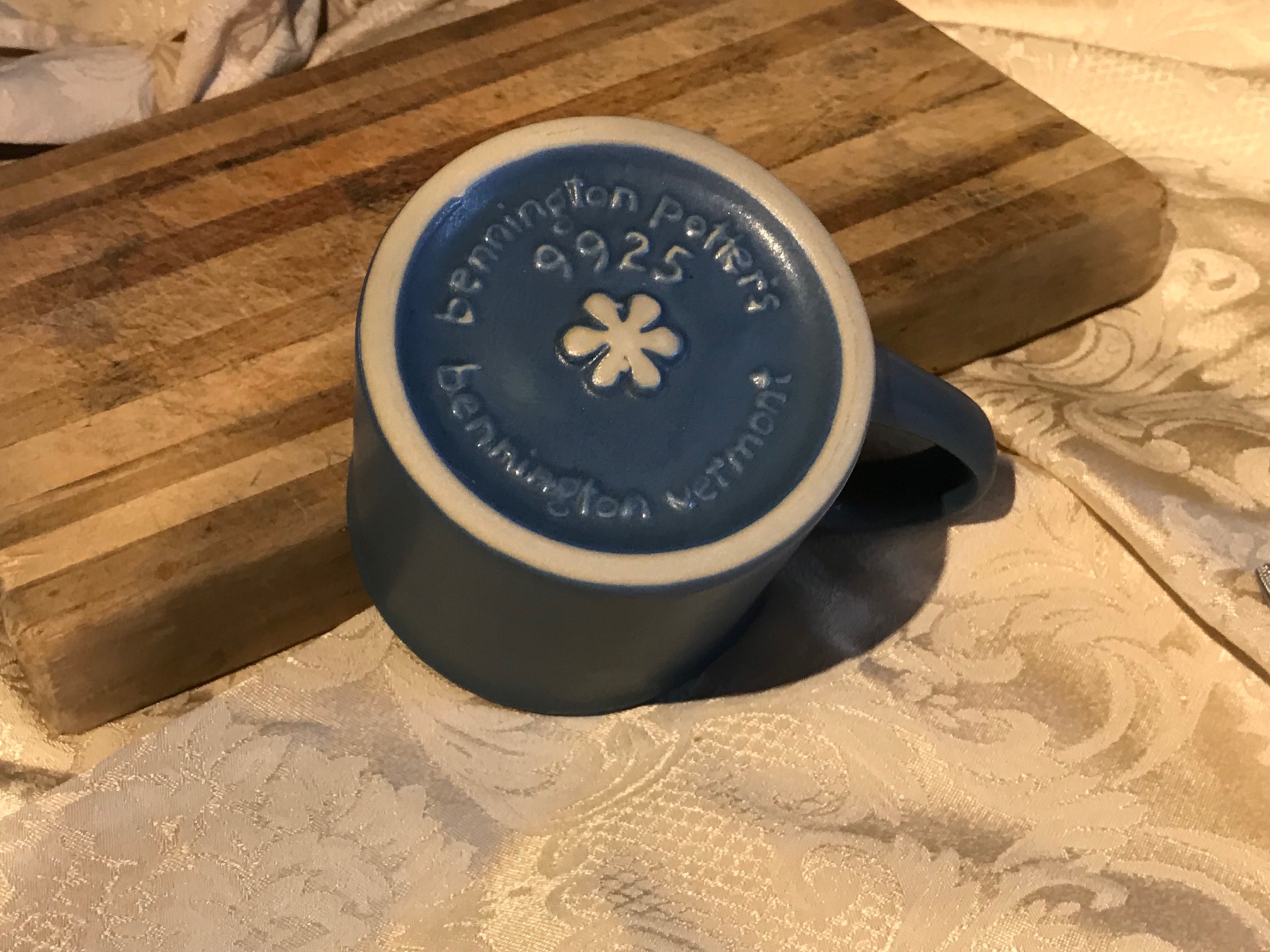
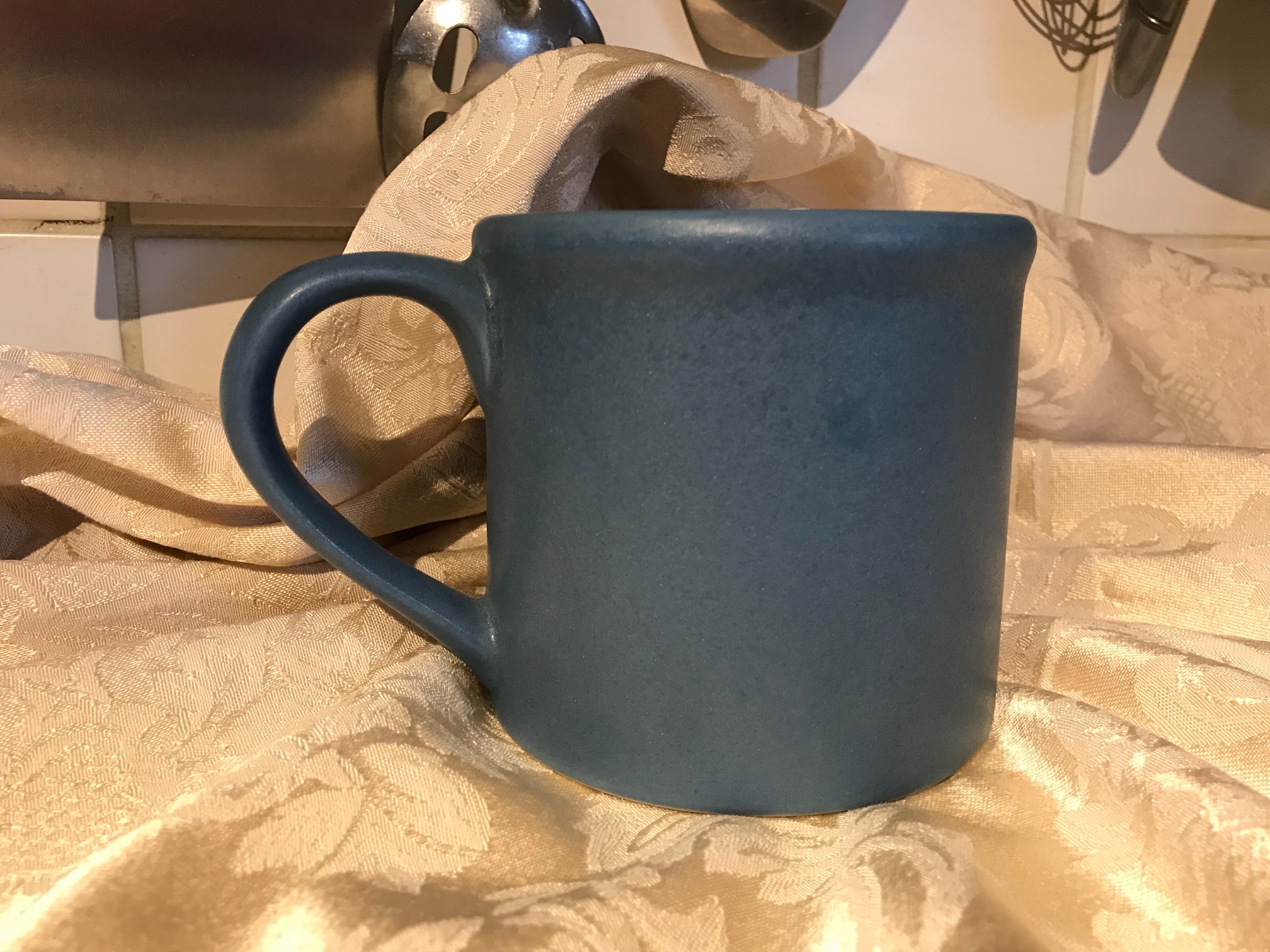
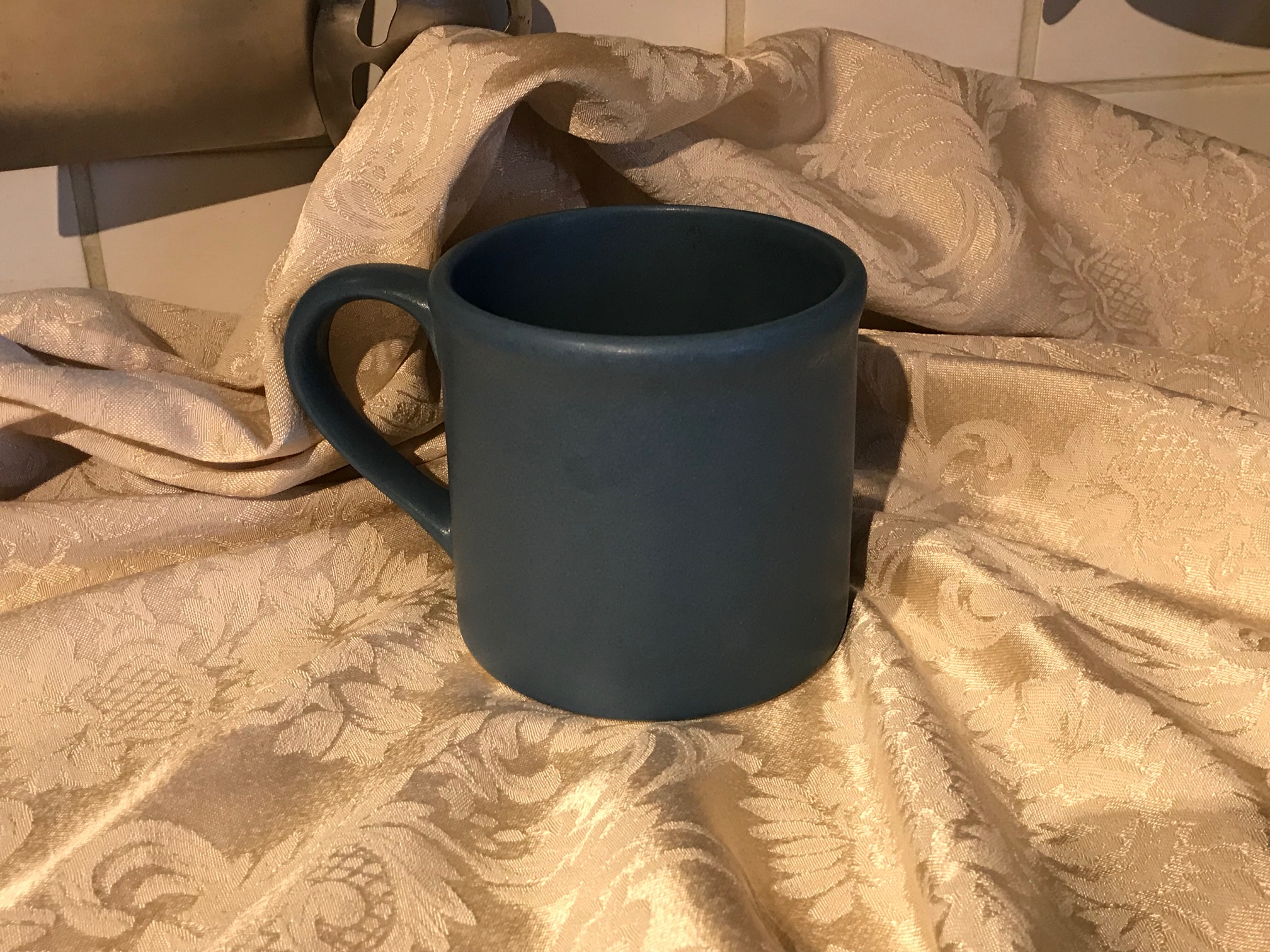

Thank you for this article, Tamara! I’m always on the lookout for beautiful, quality and SAFE mugs! <3
Me too!!!!!
This is very close to what I’m looking for! It would be perfect if it had a notch in the bottom, like some IKEA mugs, for draining pooled water while in the dishwasher. Or at least 3 legs, like some Halloween-themed black cauldron mugs I’ve seen on Amazon. I like how I can pour hot water in it to make tea, or semi-frozen strawberries to make a cold smoothie and not worry about it shattering from the temperatures. I like how the inside bottom is flat, so the blades of my immersion blender can get as close to the bottom as possible to liquefy every last bit of strawberry. The diameter of the bottom inside looks big enough to accommodate my immersion blender. I like large-capacity mugs because then I don’t have to keep walking to the kitchen to refill it with water or tea. I got constipation once from not drinking enough water; never want to go through that again! Ouch! Ha ha ha. But on a serious note, would the barium passively create lead dust and cause baritosis?
After my 1st post, I visited the Bennington Potters mug and it looks to me like they probably don’t ship to Canada since when I visited their member registration page and clicked on the “country” drop-down box, only United States with a radio button beside it showed up. I also noticeded that only American states were listed in the customer reviews. So, I went to Craigslist but didn’t see anyone selling their used Bennington in my city, or even Toronto. Then I went to eBay and found a lot of used Bennington there, but some of the stuff is from the late 1800s, so maybe there was lead in their products way back then? Ideally I’d like to buy a 2nd-hand mug of theirs, because I try to live a green lifestyle. It would be good to test different items from different decades. But if I have to buy new, I’m glad it’s made in North America, because that means it’s shipped a shorter distance, which means less pollution. I like tall mugs and tankards/seidels/steins, but not so tall that they can’t fit onto the top shelf of my dishwasher. I like that their website says everything is microwave, oven, and dishwasher safe, although I’d only be putting mine in the dishwasher and not using it in the microwave or oven. And who knows if that applies to pieces made in older decades. I was given an electric kettle that has 6 different buttons to select the temperature of the water to get heated to, and I always choose the lowest, which is “160 degrees delicate”, because I find that’s all that’s necessary for the teas I make. So, if a glass mug or Bennington mug breaks at a higher temperature than this, I’m OK with buying it still. I noticed on eBay that some Bennington mugs are completely flat on the bottom, which is good for me because I don’t like pools of water being left on my mugs after a dishwasher drying cycle, though I’ve read for other mugs by non-Bennington companies that they can be wobbly on some tabletop surfaces. That’s why most mugs by most companies have that unglazed ring on the bottom, so I’ve read.
Vintage items could be leaded – I haven’t tested enough examples from this brand to know… but subscribe to the newsletter here on the blog and you will get an email when I have tested more of these.
Tamara
Is the 9925 really 20 oz though? I looked at their online catalog and no mug is listed as being bigger than 16 oz. I’d prefer a mug that is bigger than 16 oz.
Hi – I had my husband fill it several times with water using our stainless measuring cups and he reconfirmed for me that it was 20 ounces before I published the post. It might be sold as a 16 ounce mug – I’m not sure, but the one I got (and tested) holds 20 ounces!
Tamara
hi! I have the glass mugs but was wondering if you have found any other ceramic mugs that are very large and safe beside the Bennington and the Ellen mug? My daughter is a teacher and the kids love when she has a very colorful mug! Thank you for everything that you do!
Speaking of barium, Health Canada, which is the Canadian version of the FDA I think, has announced a recall of like 26 000 Bily retractable baby gates because they are painted with a barium-containing coating. The news article was posted January 13, 2020. The barium is in excess of allowable limits.
What is the allowable limit for Barium? Is this something we should be keeping an eye on?
I’m curious what the deal with barium is? Should we be on the lookout for barium limits as well?
Also Bennington seems like such a great option. I have been wanting stoneware lead free dinner set forever (I use corelle, but don’t like how it looks. Sticking with it only because it’s lead free). Wish Bennginton was within my budget though. Alas
I contacted Bennington and this was their answer: “all of our products are toxic free.” Not sure if that’s reassuring or a cop out answer. ???
I wish Tamara would comment on the Barium. While I am thankful this item is lead free, and that she has shared and recommended it to her followers, none of us want to take care of one toxicity problem only to create another.
Tamara,
If you still want samples of Bennington mugs, I am happy to purchase some! Which colors do you think are most likely to be problematic? I’m curious about the white-on-white and turquoise colors. LMN!
Sabrina
Oh Excellent – yes please Sabrina!
Ones with a flat bottom are easiest to test – colors are not really important in this case (so which ever colors you might like tested.) The concern is more over whether or not (and to what degree) the lead levels in the substrate might vary. Thank you so much.
This is how the testing normally works: https://tamararubin.com/2019/08/tamara-can-i-send-you-one-of-my-dishes-to-test-for-lead/
But I would do them free of charge if someone sent them to me since so many people have asked.
Tamara
I would love to know if you’ve tested these items yet & can share the results!
Has this changed color over time from food content? I was gifted a green one, but I’m hesitant to use it because of the barium content. I’ve read that if barium glazes change color from food content it could be leeching dangerous levels of Barium.
https://ehs.princeton.edu/health-safety-the-campus-community/art-theater-safety/art-safety/ceramics
I understand that you are only concerned with lead, but I have noticed you have not responded to any of the comments about Barium. Most of us are so appreciative of your work, and since we don’t have the equipment or skill set needed to test our products, we are heavily relying on your recommendations for safe options. This mug being lead free is wonderful to know about, but none of us want to solve one problem only to create another. Could you please comment on the Barium and let us know if drinking out of this cup can cause toxicity for Barium?
If you look closely at the results above, she includes the Barium levels as well (the first item in each list). Whenever levels are outside of the safe zone she highlights them in red. Everything in this list shows up blue, and she’s said she would like to use these for her family, so I think it’s safe to say that the Barium levels are safe for her.
Bennington potters have never used lead glazes since their inception in the 1950’s. They do not make pottery in orange or red colors because they did not want to use cadmium. I have some vintage pieces—1970-1980– and was told they were lead and cadmium free when purchased. This is the company’s narrative and I would be surprised if they were dishonest about it. They were and are a small company, and I would think it has been far easier to oversee and control studio practices. Just my two cents worth.
Thousands of pages on this site shows us that actual science based testing is the only way to assure things are lead free. From baby bottles to vintage Tupperware, Tamara has found lead and other dangerous toxins in products that claim to be safe, but they are not. Small and large companies, famous name brands to mom and pop shops, they keep making toxic products, and claiming that they are safe. Assumptions without actual facts are dangerous. Companies must be held accountable!
Are the clear vintage fire king mugs or the non painted white fire king vintage cups lead free?
The white vintage ones typically have Lead in the glass, the clear vintage ones may have high levels of Arsenic in the glass.
T
Where can I purchase this? I went to the company’s website, but I can’t find this specific product. Its a gift for my wife.
Any of their products should have lead-free glaze but may have trace lead in the substrate.
T
Bennington, a small Vermont pottery studio, has long claimed—since their inception perhaps 1950?— that they have never used lead glazes or cadmium in their studio. You have tested a few of their pieces. Could you explain what you mean by “trace lead in substrate?”
Thank you! Carol
The substrate is not the glaze. They use lead-free glazes but there is trace lead in the actual clay on many of their pieces.
t
Have you tested any other Bennington products since the blue mug?
Yes. Using XRF technology, the substrate periodically tests positive for Lead at levels up to about 40 parts per million (ppm), and the glazes consistently test “non-detect’ for Lead, with a low threshold of detection down to single digit ppm levels.
Tamara
Do you know if all mugs have barium in them?
I tested extremely high in barium, and I am currently trying to detox from it. It seems like everywhere I look there’s barium in them… I think it’s probably in the glaze..? I love earth and but I’m thinking I might need to buy a glass mug for my coffee and tea